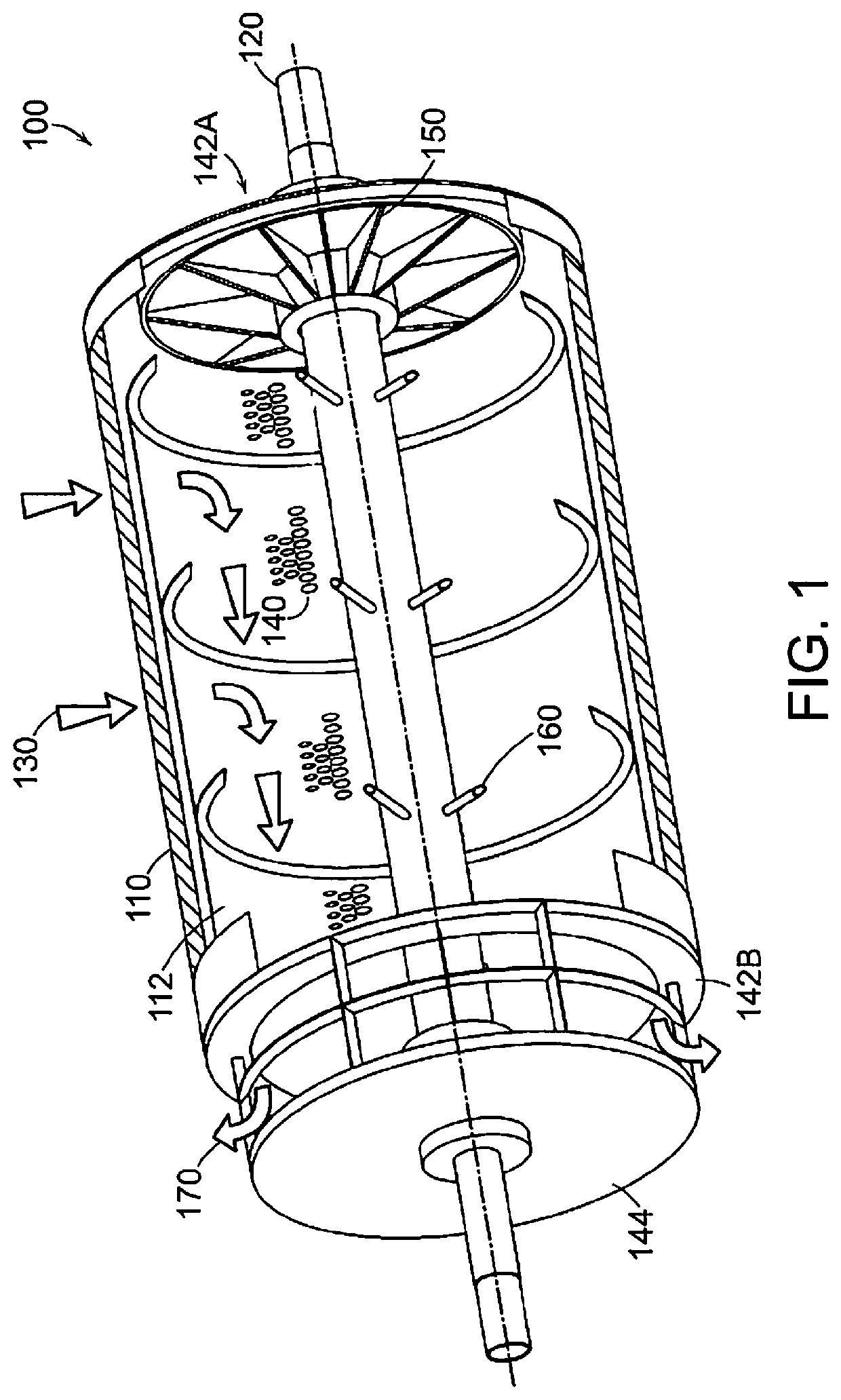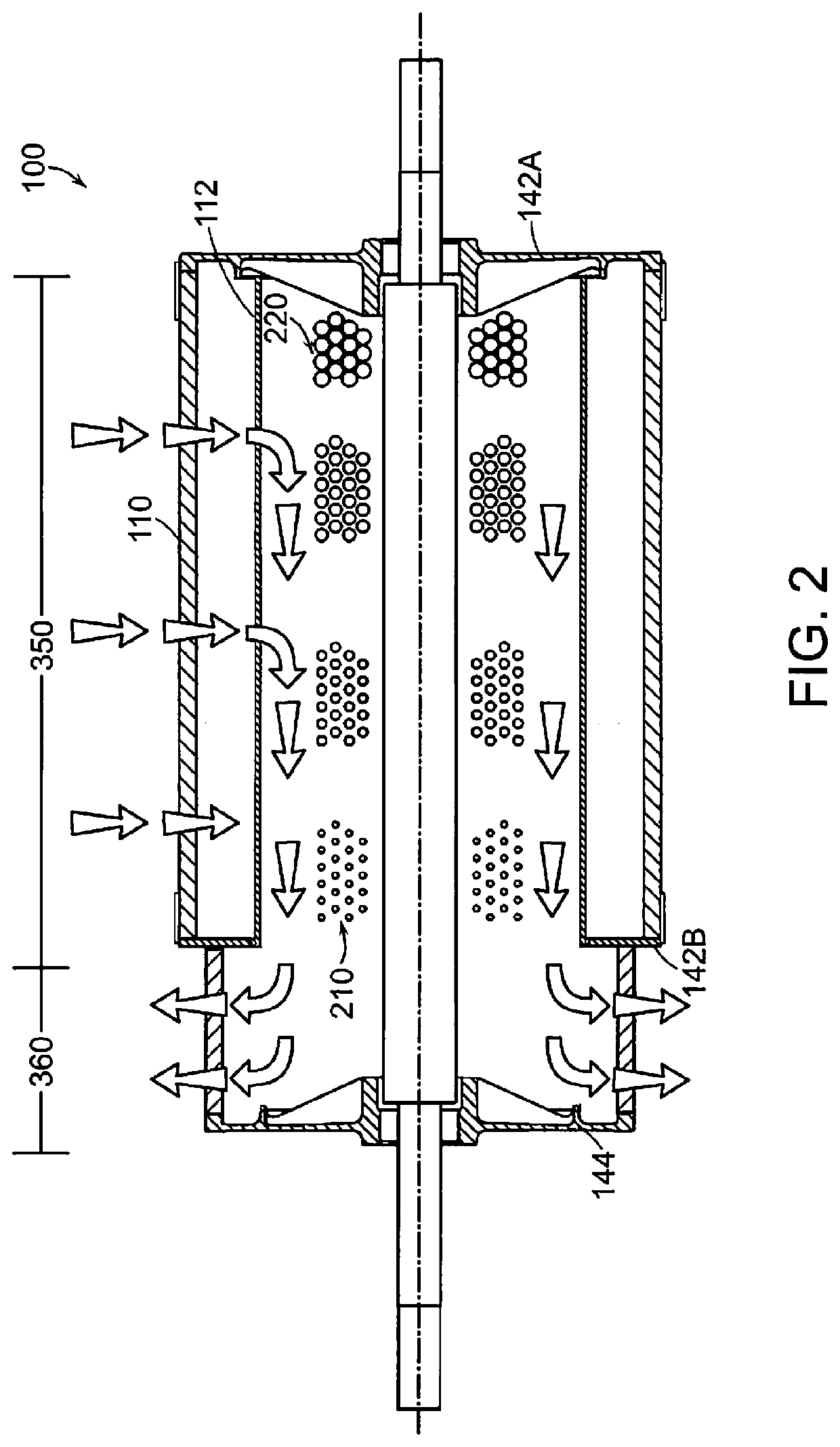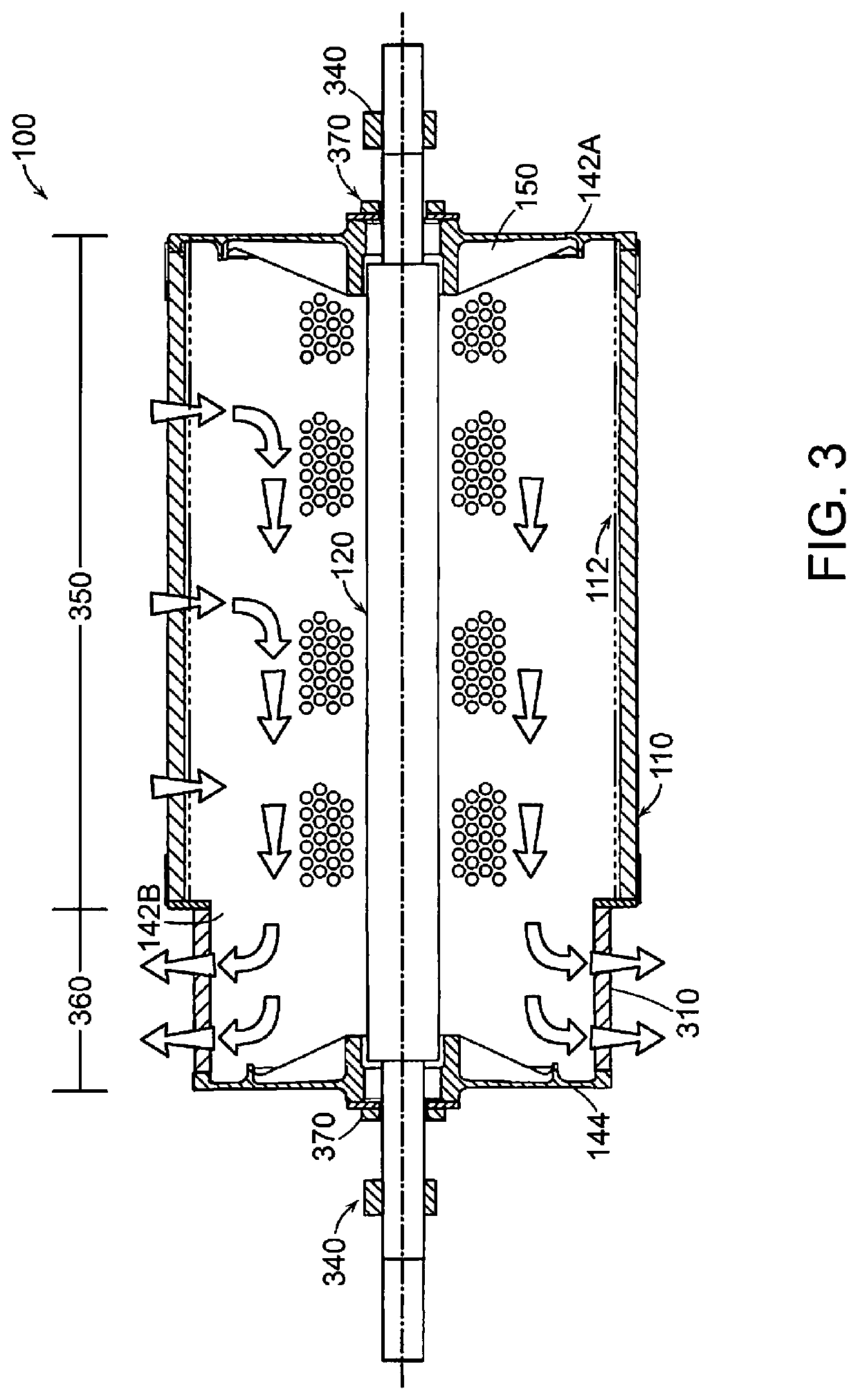Reduced diameter foraminous exhaust cylinder
a technology of exhaust cylinder and foraminous cylinder, which is applied in the direction of drying machines with progressive movement, lighting and heating apparatus, furnaces, etc., can solve the problems of large and expensive apparatus of dryers and bonders, and achieve the effects of reducing the velocity, saving energy and reducing the size of the exhaust cylinder
- Summary
- Abstract
- Description
- Claims
- Application Information
AI Technical Summary
Benefits of technology
Problems solved by technology
Method used
Image
Examples
Embodiment Construction
[0040]The present invention is directed towards apparatuses for and methods of drying permeable and semi-permeable webs such as paper, paper products and other nonwoven fiber products such as, but not limited to, filter media, hygiene products and wipes. U.S. Pat. Nos. 3,259,961, 3,590,453, 4,050,131, 6,314,659 and 8,656,605 describe devices and methods of drying permeable and semi-permeable webs, and are incorporated herein by reference in their entirety. The web may be comprised of woven and / or non-woven fibers. The present invention improves on devices and methods of drying permeable and semi-permeable webs by reconfiguring the device to allow for economical use of space in the drying facility and better control of exhaust gas resulting in greater control of velocity of drying gas across the web, thereby, resulting in greater drying uniformity while lowering energy requirements. Further, the foraminous shelled roll dryer design of the present invention may reduce or eliminate the...
PUM
 Login to View More
Login to View More Abstract
Description
Claims
Application Information
 Login to View More
Login to View More - R&D Engineer
- R&D Manager
- IP Professional
- Industry Leading Data Capabilities
- Powerful AI technology
- Patent DNA Extraction
Browse by: Latest US Patents, China's latest patents, Technical Efficacy Thesaurus, Application Domain, Technology Topic, Popular Technical Reports.
© 2024 PatSnap. All rights reserved.Legal|Privacy policy|Modern Slavery Act Transparency Statement|Sitemap|About US| Contact US: help@patsnap.com










